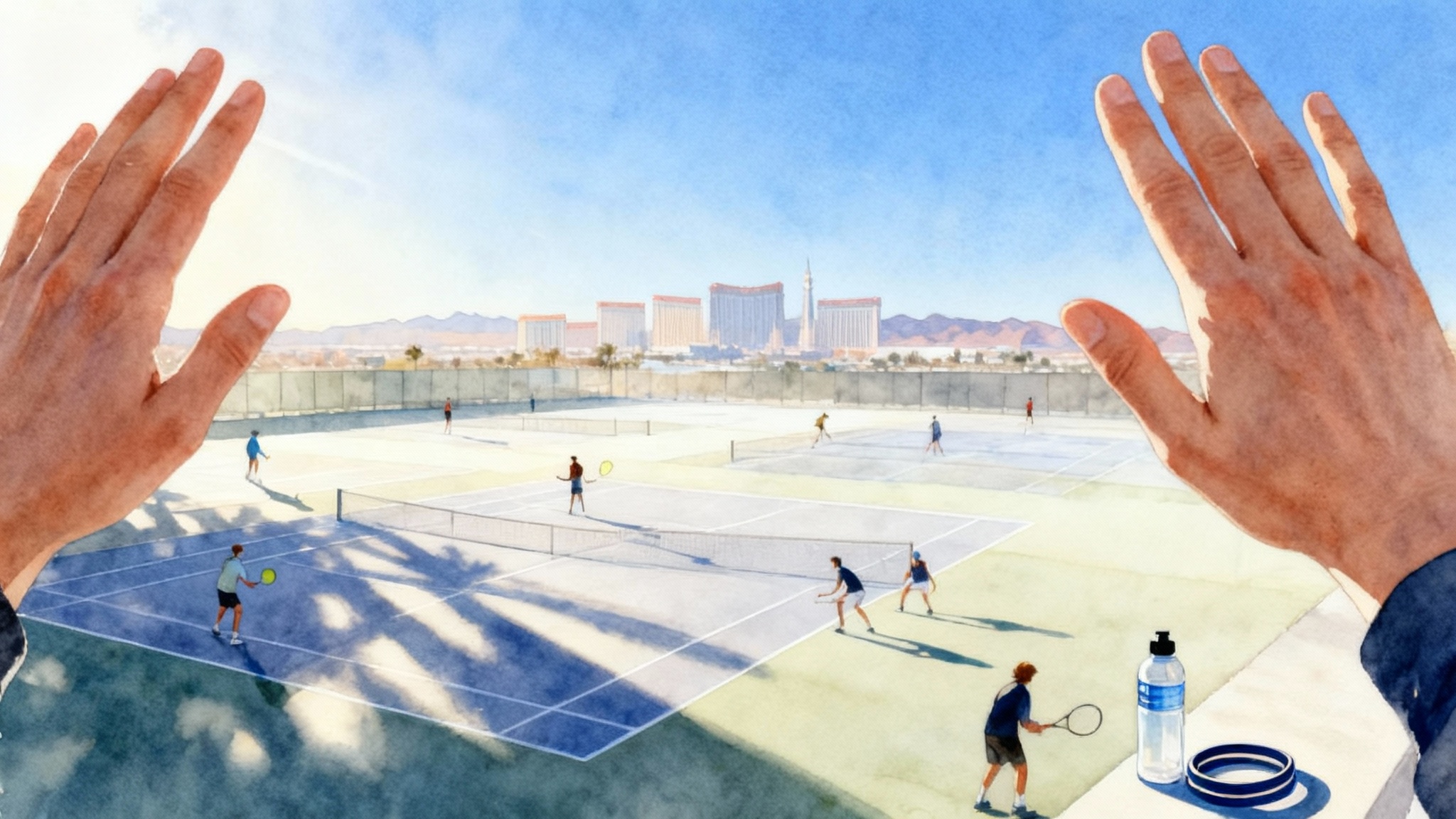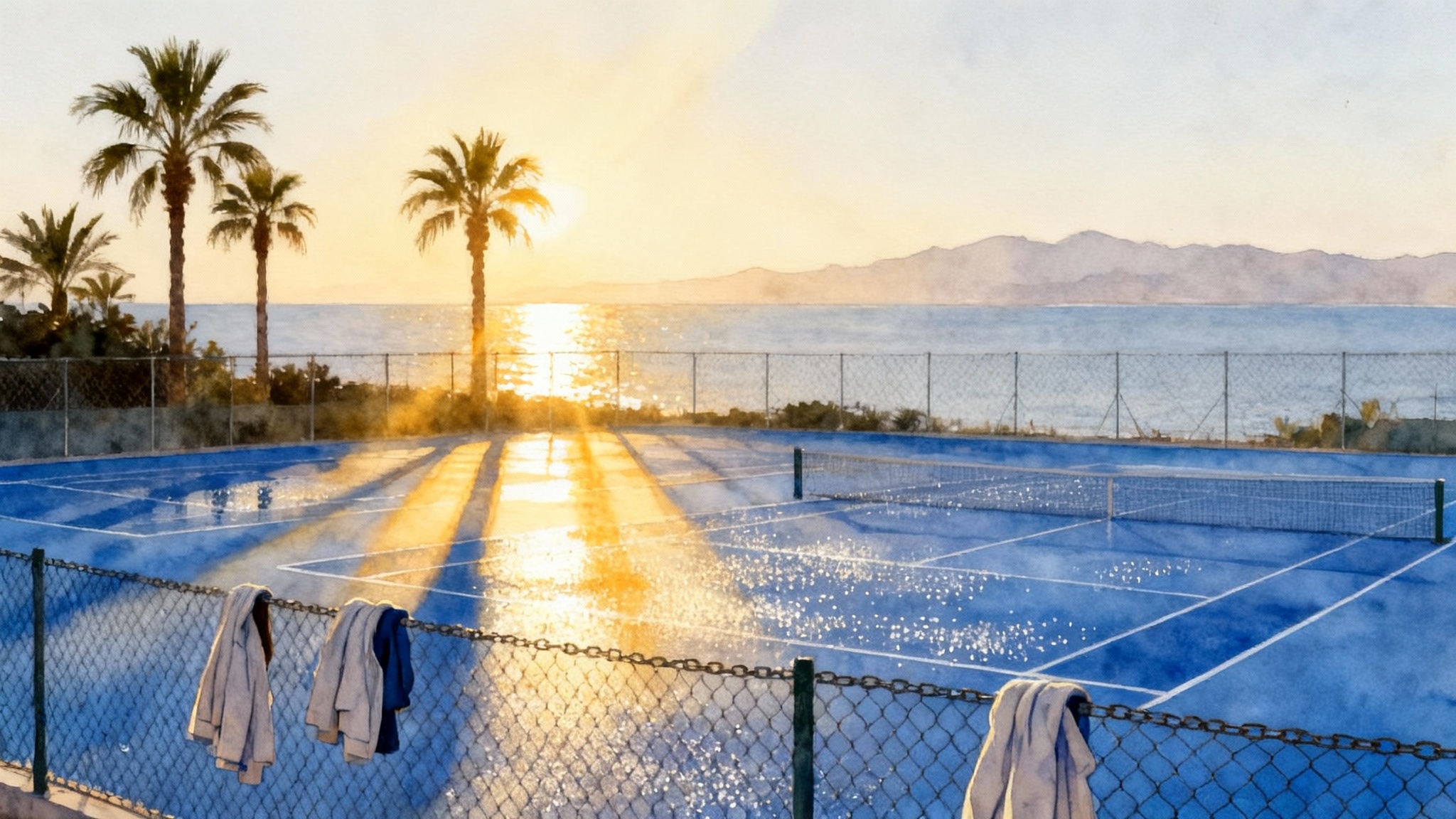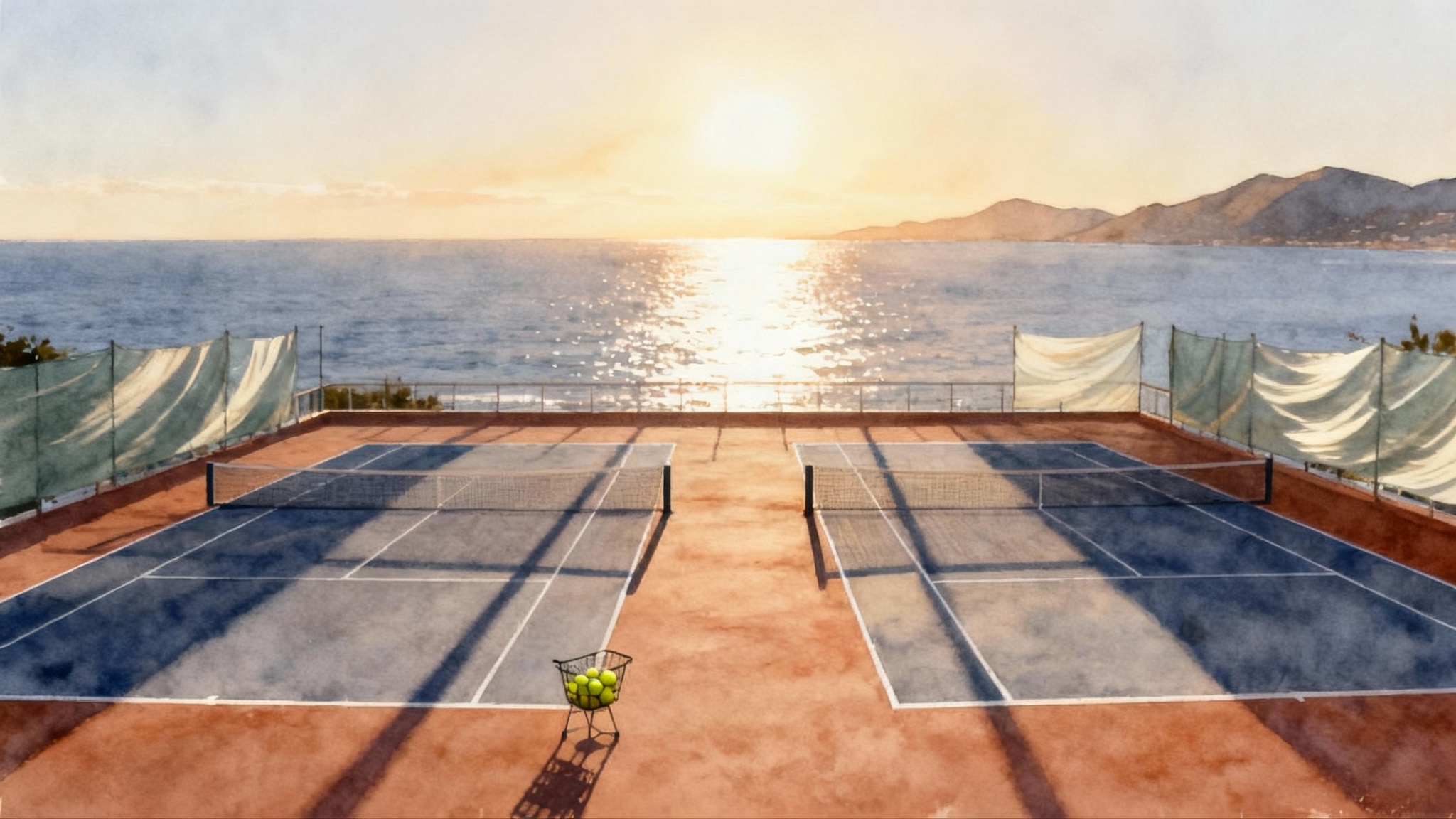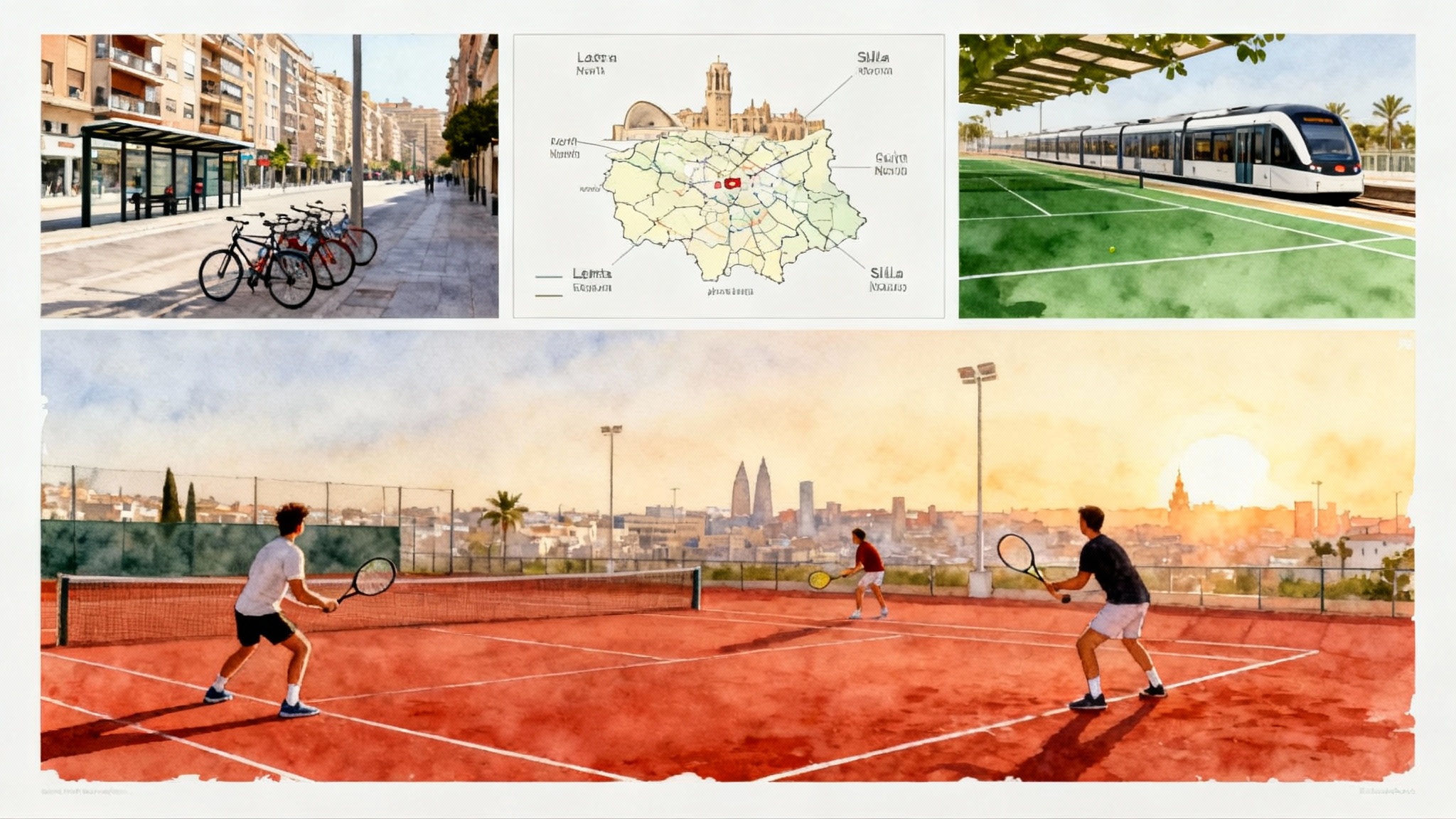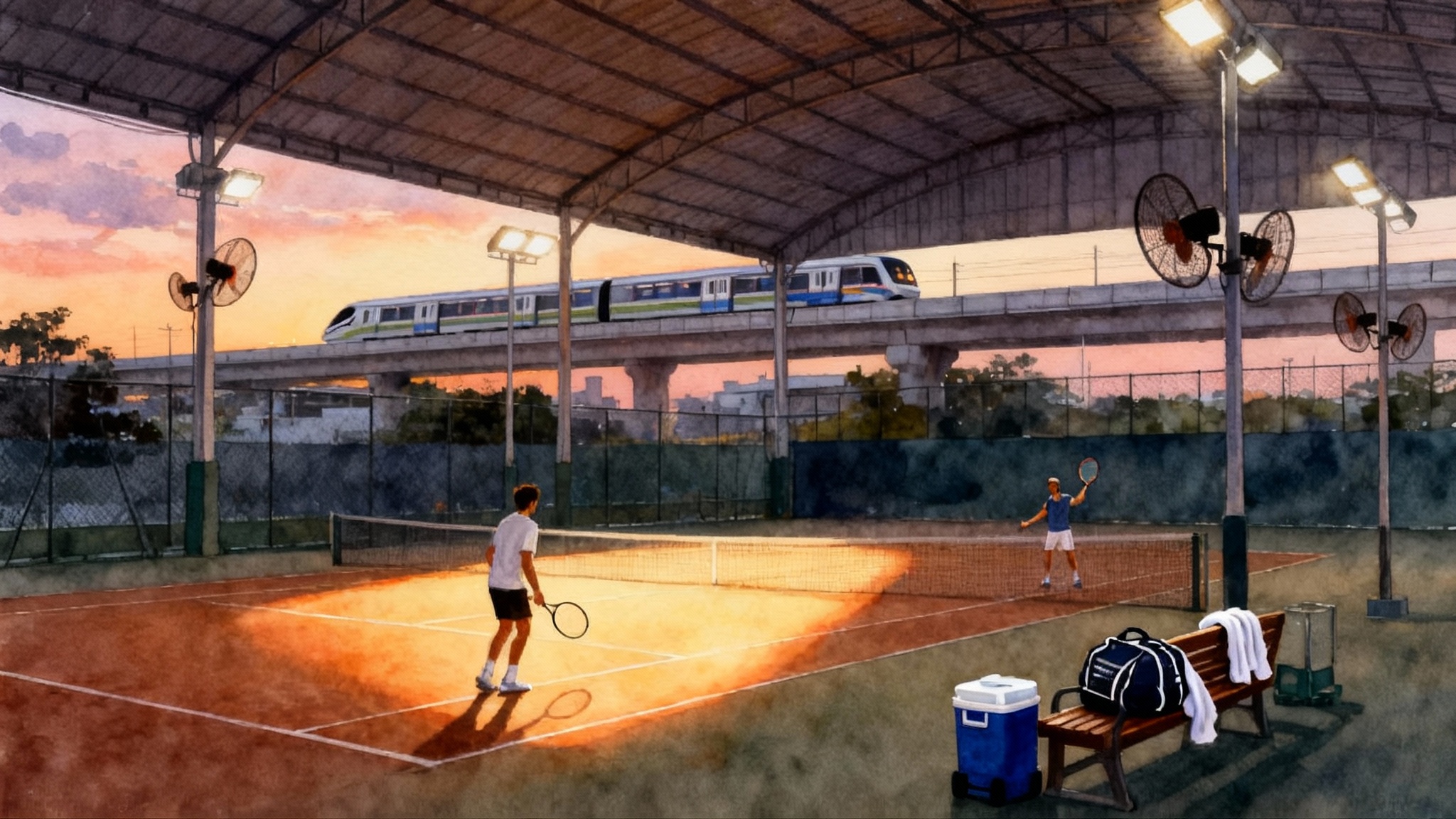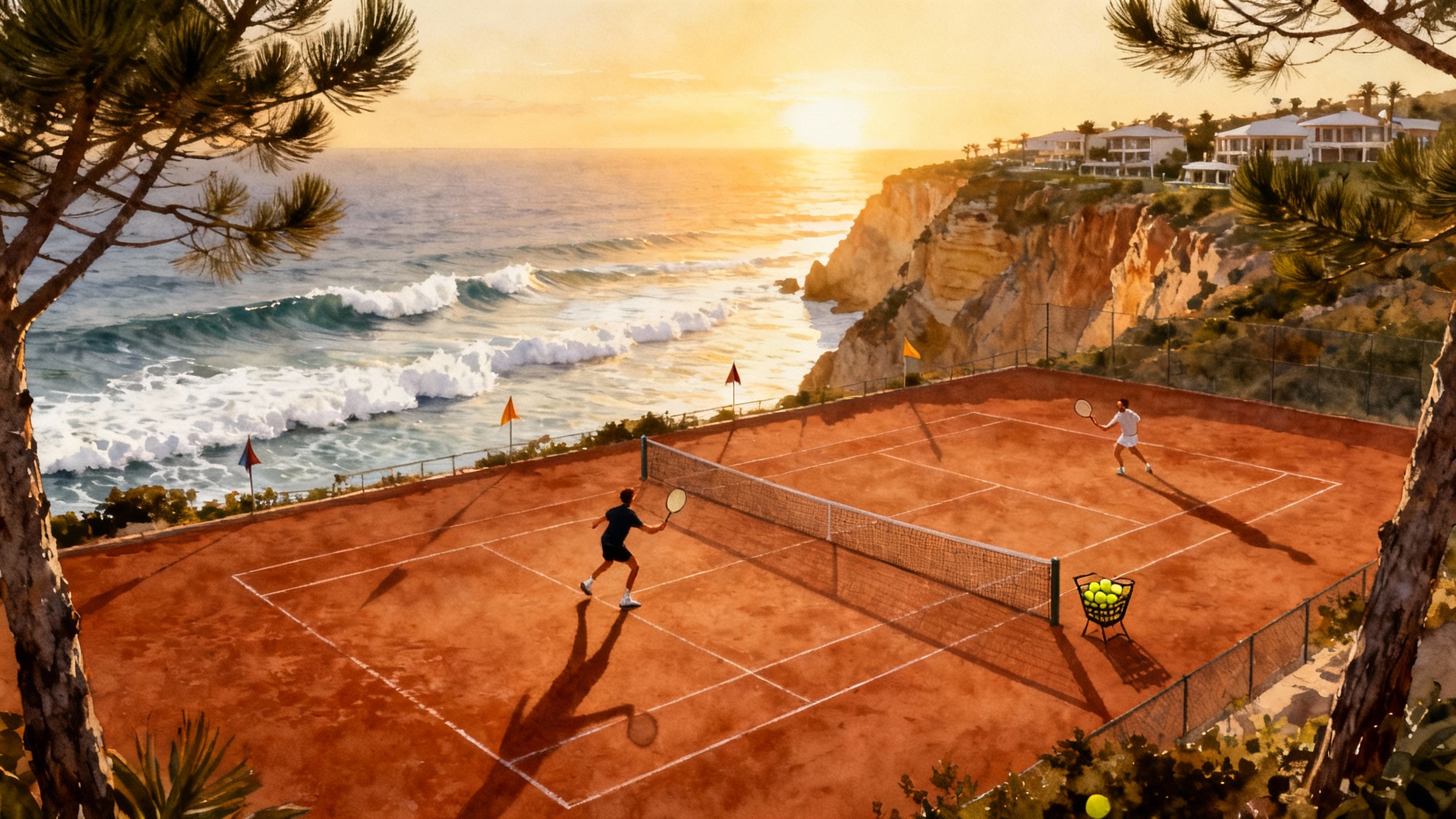Malta Winter Tennis 2025–26 at Marsa: Asciak Academy Base
From December 2025 to March 2026, Malta offers mild courtside weather, short rain windows, and easy European Union access. Train at Asciak Tennis Academy at Marsa Sports Club with a smart 7–10 day plan, sea recovery, and practical costs.
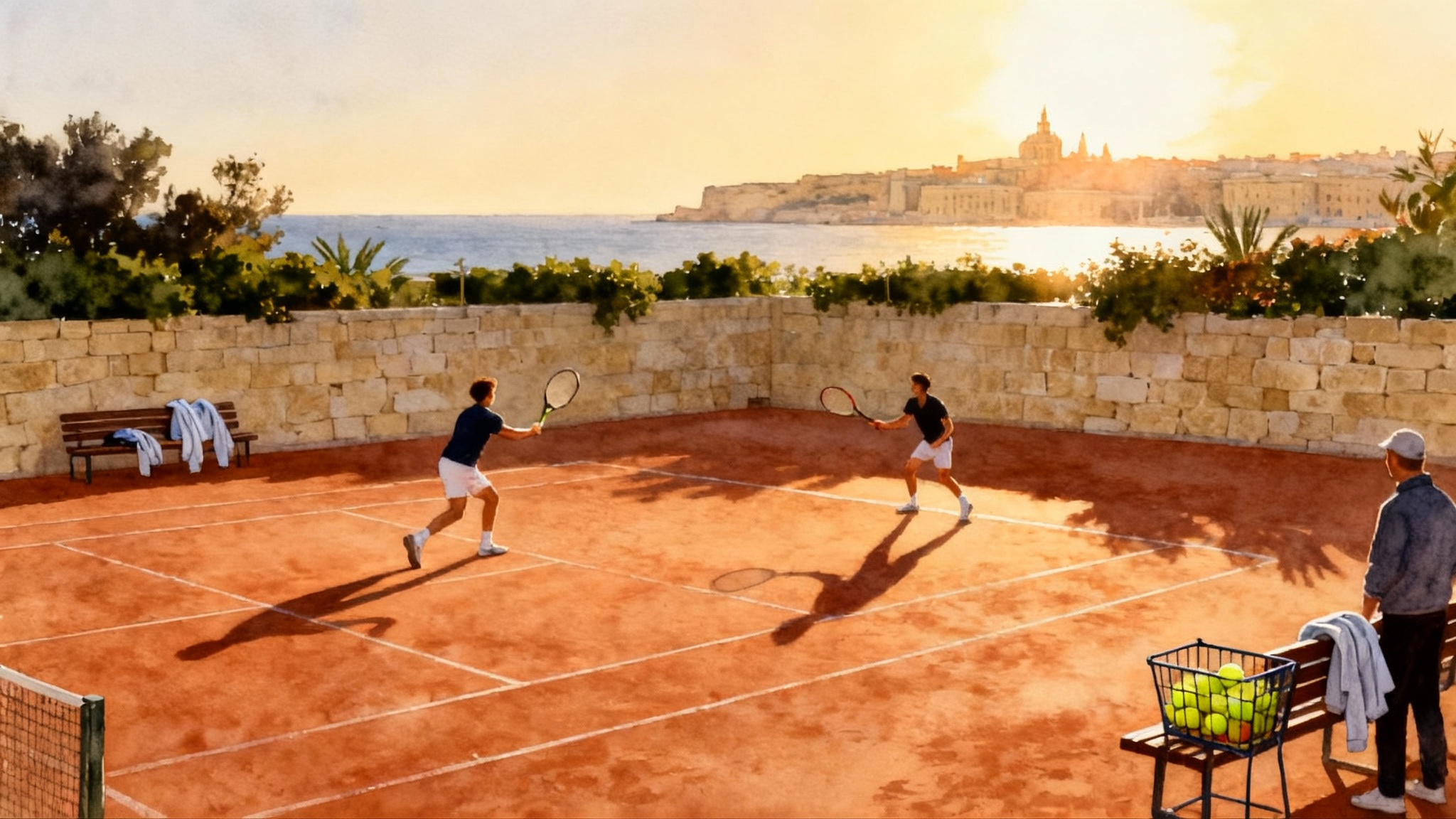
Why Malta wins December to March for tennis
Circle four months on your calendar: December 2025, January 2026, February 2026, and March 2026. This is when much of mainland Europe slips into unpredictable tennis weather. The Iberian coast can give you a week of showers, the Italian peninsula cools sharply at night, and the Aegean can turn blustery without warning. Malta sits in the center of the Mediterranean and plays a different match. Daytime highs typically land in the mid to high teens Celsius, roughly the low 60s Fahrenheit, and the rain, while present, tends to arrive in short bursts that pass quickly. That combination means more playable hours without chasing indoor slots.
If you want hard numbers, check the official climate normals for Malta. They show why a winter block here is less of a gamble than on the mainland. Add nonstop and one-stop connections from major European hubs, compact distances on the island, and English widely spoken, and you have a base that keeps logistics light so your energy goes to tennis, not troubleshooting.
The on-ground hub: Asciak Tennis Academy at Marsa Sports Club
Set inside Marsa Sports Club, Asciak Tennis Academy profile is the island’s performance nucleus. The club setting matters. You are not hitting on isolated municipal courts that might be slick after a shower. You are training in a multi-sport complex with multiple clay and hard courts, good drainage, and staff who know how to prep surfaces quickly when weather rolls through. That is the practical edge in winter: a playable court when the forecast looked so-so at breakfast.
Asciak’s team is embedded in Malta’s small but active competitive scene. They can arrange match play that suits your level rather than last-minute scrambles. Expect well-rounded sessions: physical activation, footwork ladders, live-ball patterns, serve and return reps, and point construction that tightens decision making. Juniors, college players on break, and determined adults all benefit from the academy model because sparring partners and coaching are coordinated in one place. You save hours every day that would otherwise go into scheduling.
What the weather really gives you on court
It is easy to get lost in averages. What matters for a training block is playable hours and how they cluster.
- Temperature window: Malta spends most winter days between 12 and 18 degrees Celsius, about 54 to 64 Fahrenheit, peaking midafternoon. That is enough warmth for hands to stay loose without thick gloves, which means cleaner feel on the racquet.
- Rain pattern: Showers tend to be episodic rather than day-long soakers. Courts at Marsa usually dry fast when wind picks up and sun returns. Clay may need a little longer, so alternate between surfaces if you must keep the session alive.
- Wind: The island gets breezes, and that is a feature if you train for control. Coaches at Asciak often use crosscourt targets and height windows to make wind a constraint you learn to solve rather than a frustration to avoid.
How does that stack up against common mainland options during the same months? For a Canary Islands comparison, see our Tenerife vs Gran Canaria guide. For an eastern Mediterranean alternative, check our Larnaca winter tennis plan.
A 7-10 day training and match-play template
The framework below balances volume, intensity, and recovery. Adjust work-to-rest ratios based on your age and training history. The goal is cumulative quality, not one heroic day.
Days 1-3: Load in, patterning, and controlled pressure
- Morning session 9:30-11:45: Dynamic warm-up, movement ladder, crosscourt forehand and backhand windows, serve rhythm build. Ten-minute hydration and grip change at halfway.
- Lunch and review 12:30-13:30: Simple carbs plus lean protein. Ten minutes of notes on two priorities for the afternoon.
- Afternoon session 15:00-16:45: Live-ball patterning: forehand inside-out to backhand corner, then forward transition. Add two situational tie-breakers to finish.
- S&C add-on 17:15-17:45: Strength and conditioning circuit with mobility and posterior chain work.
Day 4: Recovery with light feel
- Late morning 10:30-11:30: One hour of touch skills: short court, drop shots, underspin approaches. Finish with ten minutes of serves at 70 percent.
- Afternoon: Sea walk and 10-12 minutes of cold water exposure if you tolerate it. See recovery tips below.
Days 5-7: Match play and targeted fixes
- Morning 9:30-11:30: Set play with a similar UTR or NTRP. Start each set with a chosen constraint: second serve only in game 1, must finish at net in game 3, play one no-ad game per set.
- Afternoon 15:00-16:30: Fix-it block. Two technical tasks identified from the morning plus 20 minutes of serve plus one patterns.
- Evening: Light video review and prehab.
Days 8-10: Peak days then taper
- Day 8: Heavier load, two full sets plus super tie-break. Afternoon return plus first ball drill.
- Day 9: One set, then situational points from 30-30, 15-30, ad-out. Afternoon half-court and volleys.
- Day 10: Taper day. Forty-five minutes of rhythm hitting, 30 serves, and five games of doubles return only. Pack, stretch, and notebook debrief.
This template scales. Juniors add supervised study blocks. Adults with work can push morning heavier, then reduce afternoons to a 60-minute fix-it.
Sun-safe scheduling and hydration
Winter sun at 35 degrees north latitude can surprise you, especially after snow at home. Plan sessions to ride the daily temperature curve without frying your face.
- Best windows: 10:00 to noon and 14:30 to 16:30 in December and January. In February and March, extend to 17:00 as light improves.
- Clothing: A cap with a dark underbill to reduce glare, long-sleeve shirts with ultraviolet protection fabric, and polarized sunglasses if you serve toss-first. Lightweight layers help you adjust during clouds and breeze shifts.
- Sunscreen: Broad spectrum 30 plus, reapplied at the water break. Zinc on the nose and cheekbones.
- Hydration: One bottle with electrolytes per 90 minutes on court. Use a pinch of salt and a squeeze of citrus if you do not have mix handy. Add a small carbohydrate snack at the midway point of two-hour sessions.
Recovery by the sea
You can walk to water from almost anywhere in Malta within minutes. Use that geography. Cold water immersion between 10 and 15 degrees Celsius can reduce soreness and lower perceived fatigue the next day. If you prefer gentle, switch to a twenty-minute seaside walk on the Sliema to St Julian’s promenade and breathe through your nose to downshift your nervous system. On true rest days, add a short ferry to Valletta for easy steps and limestone views, or a sunset stroll at Golden Bay. The point is to get daylight, move joints through range, and return to the next session with bounce in your legs.
Getting to Malta: routes, time zones, and costs
Malta International Airport sits roughly 15 minutes from Marsa Sports Club by car when traffic is normal. From most European capital cities, flight time is two to three hours. From the United States East Coast, expect one stop via London, Frankfurt, Rome, Paris, or Munich with a total travel time around 12 to 15 hours door to door. West Coast travelers should plan on 16 to 19 hours with two flights and a European connection.
Cost planning for flights depends on how early you book and which holiday weeks you avoid. Use these conservative working bands to build a realistic budget then shop for deals.
- United States East Coast to Malta in winter: plan 650 to 950 United States dollars round trip when booked four to ten weeks out. Holiday weeks can push higher.
- Major European hubs to Malta in winter: plan 60 to 180 euros each way on hand-baggage fares, more with flexible tickets.
Local transport is straightforward. Ride-hailing is widely available and typically cheaper than in northern Europe. Buses connect most coastal areas to Marsa with predictable frequency on weekdays. If you drive, remember left-side traffic and allow extra minutes at rush hour near Floriana and Valletta.
What a week really costs on the ground
Your basket is personal, but the items are familiar. Court time, coaching, housing, food, and local transport make up almost everything.
- Courts: Budget 15 to 30 euros per hour for non-member bookings at club venues. A winter drizzle may delay clay longer than hard, so consider a mixed-surface plan to keep your schedule intact.
- Coaching: Private sessions often run 50 to 90 euros per hour depending on coach seniority and whether you book a package. Shared lessons reduce the cost and increase live-ball time if partners are well matched.
- Match play: Many players arrange supervised match sets. A small court-plus-coordination fee is common. Build it into your plan rather than improvising day by day.
- Stringing and balls: Budget 15 to 25 euros for stringing labor, more with premium polyester. Bring two reels or your preferred set packs if you are picky. Balls are widely available at normal European prices.
- Housing: In Sliema, Gzira, or Floriana, expect 60 to 120 euros per night for clean midrange apartments or hotels in winter. Valletta’s boutique stays trend higher. Booking a place with a washing machine simplifies training loads.
- Food: 25 to 45 euros per day if you mix supermarket breakfasts with one sit-down meal. Hydration salts and protein snacks keep costs down between sessions.
- Transport: 30 to 60 euros per week if you balance buses and ride-hailing, more if you hire a car for day trips.
A practical seven-day budget, excluding flights, often totals 700 to 1,200 euros per player depending on lesson volume and housing type. Add flight bands above to estimate your all-in.
Where to base yourself and how to move
- Closest launchpads to Marsa: Floriana and Hamrun are the nearest, with very short rides. Valletta sits on the peninsula just northeast and puts you close to culture without adding much commute time.
- Balanced bases for players with families: Sliema or Gzira give you seafront walks, cafés, and supermarkets that make a training week feel easy. Commute time to Marsa is usually 15 to 25 minutes by car depending on hour.
- Day-off ideas within 30 minutes: Valletta’s Upper Barrakka Gardens, Mdina’s quiet streets, the coastal path from St Julian’s to St George’s Bay. If you have a full day, Gozo rewards the early ferry.
How Asciak at Marsa structures productive days
The academy rhythm is designed for winter daylight and quick weather decisions.
- Early check: Coaches assess surface conditions at opening time. If clay is slow to dry, you shift to hard in the morning, then return to clay in the afternoon for higher footwork demands.
- Video and feedback: Short clips captured on smartphones, reviewed on the bench during the water break, keep feedback tied to sensations you just had.
- Sparring pool: Because the academy runs continuous programming, it can slot you into ladder matches or set play with players of similar Universal Tennis Rating or National Tennis Rating Program levels.
- Tournament toe-dips: If your block overlaps a local event, the academy can advise whether to enter singles, doubles, or just watch a round to learn how local courts play.
A day-by-day winter schedule you can copy
- 08:00 Wake, mobility, light breakfast. Layer up for a cool first 20 minutes on court.
- 09:30-11:45 Session one. Start with rhythm, then the day’s technical priority, finish with competitive games.
- 12:30 Lunch and notes. Identify one cue you will keep for the afternoon, not three.
- 14:30-16:30 Session two. Match play or serve plus first ball. Finish with a tie-break.
- 17:00 Recovery. Sea walk or dip, hot shower, light stretch.
- 19:30 Dinner heavy on carbohydrates if you load tomorrow. If tapering, add more protein and vegetables.
- 21:30 Lights low. Blue light off. Wake time matters more than bedtime, so keep it consistent.
Practical tips that save your week
- Pack two pairs of shoes if you will split between clay and hard. Keep the treads separate so you get honest traction on each surface.
- Bring a lightweight rain jacket with a quiet fabric that does not rustle during points. Noise disrupts focus more than people think.
- Stash extra overgrips in your bag. Winter humidity can surprise you after a shower passes.
- Use travel days as training days for your brain. Watch a set from your last tournament and write three patterns you want to test during the week.
When to book and how to structure payments
For December and early January, book courts and coaching blocks by late October to lock preferred times. For February and March, mid-December is usually fine. Package a mix of private lessons, shared sessions, and supervised match play so you get volume without killing your budget. Confirm cancellation policies and whether rain moves you to a different slot rather than wiping you off the board. A clear plan avoids the biggest winter waste: the orphan afternoon where players drift without a court or a purpose.
Final service game: Malta as the smart winter base
A good training block is the sum of small wins. Malta gives you a lot of them between December 2025 and March 2026. Mild temperatures that let hands stay warm. Short rain windows that do not steal whole days. An academy hub at Marsa that turns weather and scheduling into solvable problems. Flights that keep you one stop from a court that dries fast. The result is not magic. It is repetitions that stack up until your patterns hold under pressure. If your plan is to return from winter with a stronger serve, a faster first step, and match confidence that feels earned, Malta is an honest choice. Book the block, prepare your body, and let the island’s rhythm do the rest.
